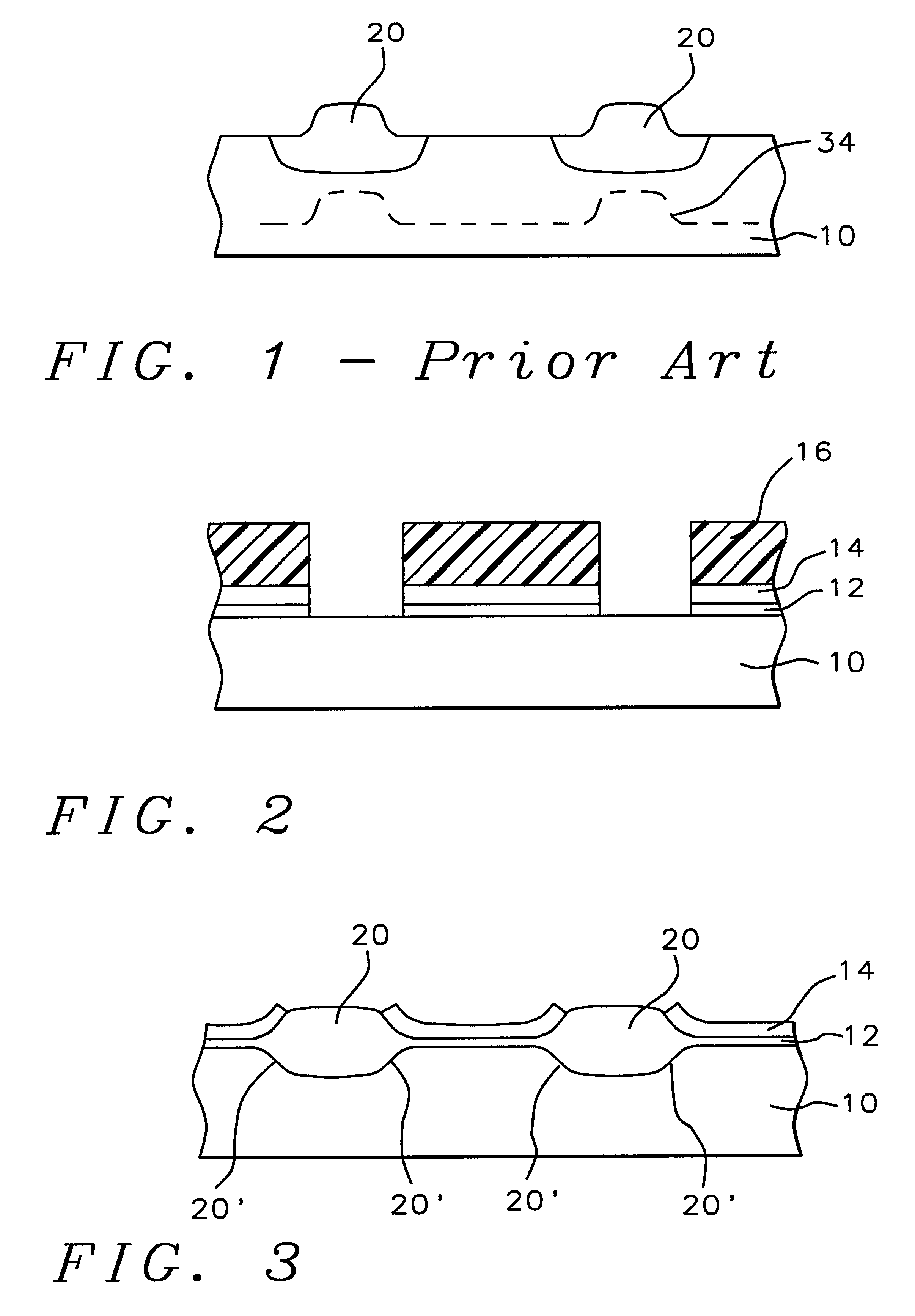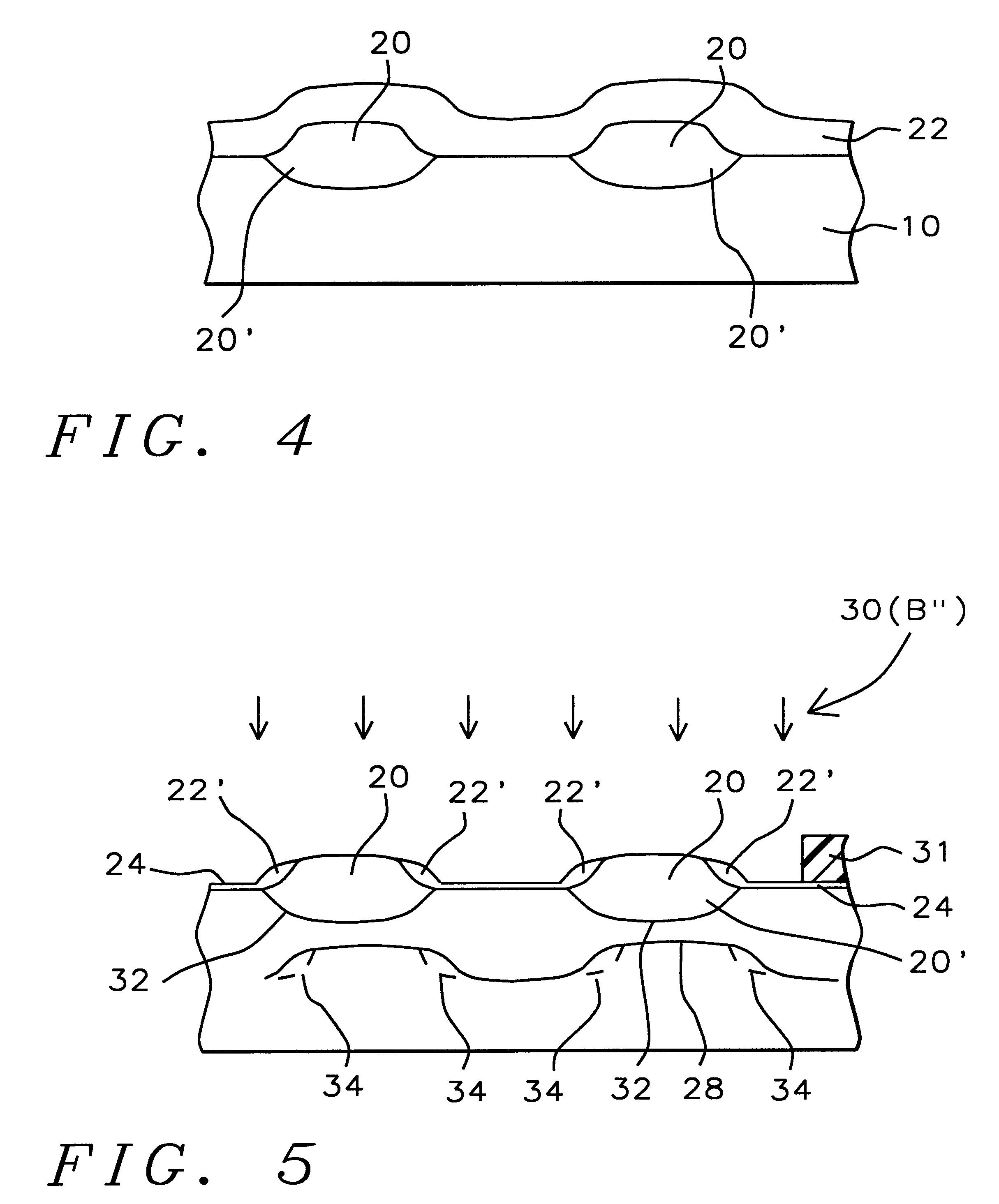Method of making an improved field oxide isolation structure for semiconductor integrated circuits having higher field oxide threshold voltages
a technology of field oxide isolation structure and integrated circuit, which is applied in the manufacturing of semiconductor/solid-state devices, basic electric elements, electric apparatus, etc., can solve the problems of lateral oxidation of silicon substrate, circuit density increase, and device feature size reduction
- Summary
- Abstract
- Description
- Claims
- Application Information
AI Technical Summary
Benefits of technology
Problems solved by technology
Method used
Image
Examples
Embodiment Construction
Silicon substrates were processed having DRAM cells with the conventional LOCOS process, as shown by the prior art of FIG. 1, and the modified field oxide, as shown in FIG. 5. Both field oxides were grown to a thickness of 2600 Angstroms. After forming the sidewall insulating portions 22' to form the modified field oxide (FIG. 5), both field oxide structures were implanted with boron at a dose of 4.5 E 12 ions / cm.sup.2. The threshold voltage (V.sub.th) of both field oxide structures was measured by forming a gate electrode over the field oxides between adjacent device areas, which serves as the source / drain areas for this field oxide MOSFET. The threshold voltages were determined by measuring the source / drain current as a function of the gate voltage. The conventional field oxide had a V.sub.th of 8.21 volts, and the modified field oxide had a V.sub.th greater than 10 volts, which is an improvement of at least 22% This clearly demonstrates the improved V.sub.th for the modified fiel...
PUM
 Login to View More
Login to View More Abstract
Description
Claims
Application Information
 Login to View More
Login to View More - R&D
- Intellectual Property
- Life Sciences
- Materials
- Tech Scout
- Unparalleled Data Quality
- Higher Quality Content
- 60% Fewer Hallucinations
Browse by: Latest US Patents, China's latest patents, Technical Efficacy Thesaurus, Application Domain, Technology Topic, Popular Technical Reports.
© 2025 PatSnap. All rights reserved.Legal|Privacy policy|Modern Slavery Act Transparency Statement|Sitemap|About US| Contact US: help@patsnap.com



